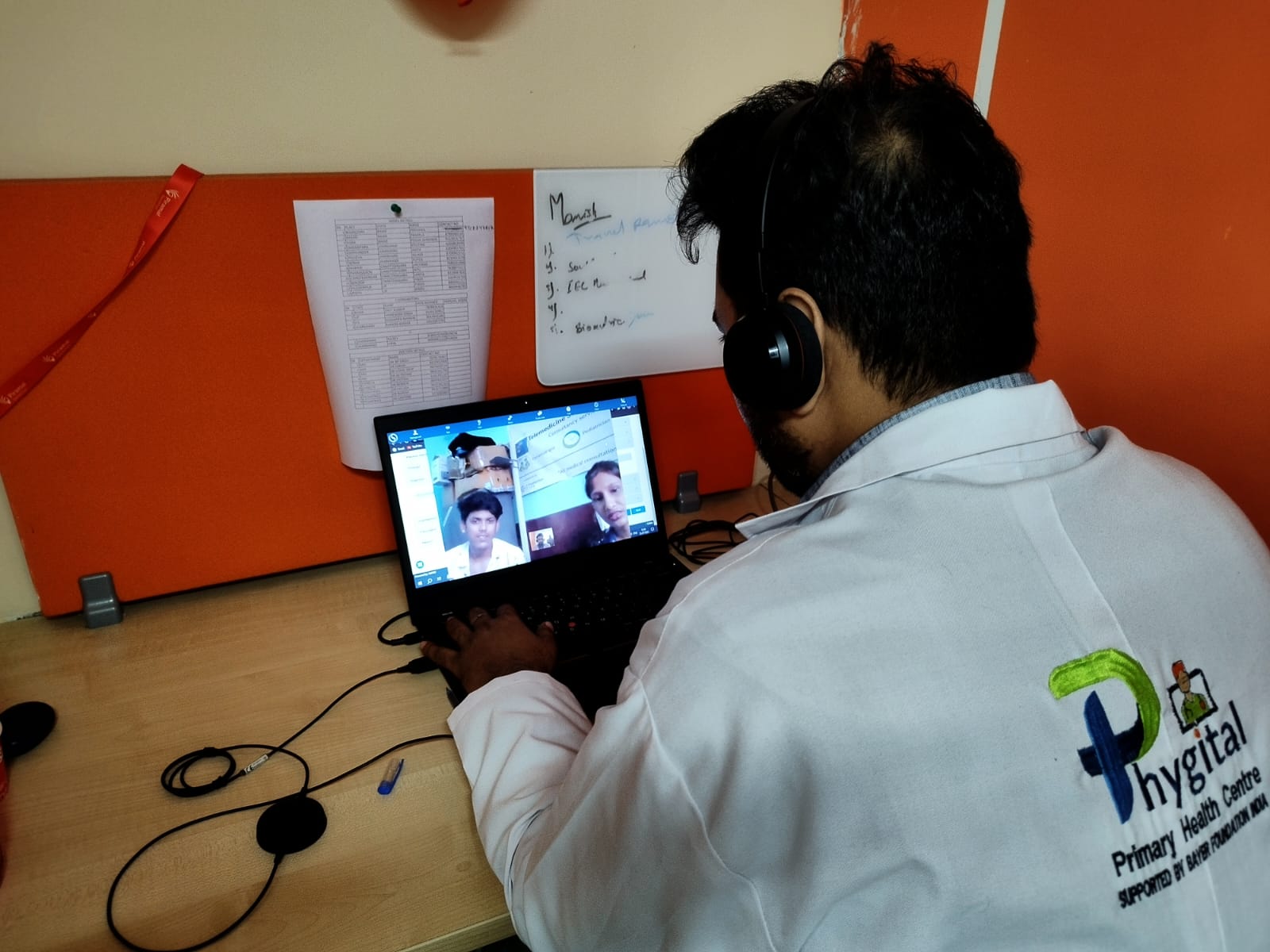
“Access to affordable and specialized healthcare has always been a challenge for the underserved communities in our country. To ensure we reach the remotest of locations, Bayer Foundation collaborated with Piramal Swasthya to set up this Telemedicine Project. This initiative enables such communities with access to primary and specialist healthcare consultations. Adopting a hub-andspoke model, we have reached over 100,000 individuals through 13 telemedicine nodes at the government health centers within a few of the aspirational districts of Bihar, Jharkhand, Chhattisgarh and Uttar Pradesh. This project not only underscores our commitment to enhancing public health but also sets new standards to strengthen preventive healthcare.”
Rachana Panda, Vice President and Country Group Head, Communications, Public Affairs, Sustainability and CSE- Bayer South Asia, and Director- Bayer Foundation India
Summary
Digital Bharat Collaborative (a part of Piramal Foundation) aims to digitise health records using suitable technology to ensure specialised healthcare services to reach the unserved and underserved population. As there is a lack of adequate healthcare facilities in many Primary Health Centres (PHCs) and Community Health Centres (CHCs), the foundation wants to ensure equitable and accessible healthcare for all community members through this initiative.
Technology-enabled solution
To provide equitable access to quality primary healthcare, the organisation has utilised their inhouse software application. The platforms are Accessible Medical Records via Integrated Technologies (AMRIT) and Electronic Medical Record platform integrated with SwyMed application to provide Telemedicine (TM) solutions for improved health care services and maintaining health records. It accommodates tele-consultation sessions for both walk-in as well as scheduled patients. Based on the availability of remote Specialists and General Physicians, the solution allows booking of appointments in advance. SwyMed’s patented software overcomes traditional connectivity issues to enable medical professionals to treat and monitor patients from anywhere through real-time video.
Technology enabled solutions
AMRIT: The Telemedicine IT solution is a part of AMRIT a health technology platform built by the organisation, which acts as the first step in achieving transformed health care. Deploying this online platform helps to provide a continuum of care for better health service delivery and digital adoption amongst healthcare service providers and strengthens primary healthcare services. The near realtime dashboards allow stakeholders and service providers to monitor the services on an “any time/anywhere” basis. Data models in the software creates quick analytics allowing the partner to measure outcomes of the services easily.
Challenges in implementing technology-enabled solutions
During deployment of the solution, there were several challenges, including infrastructure development, digital literacy training programmes tailored to rural communities, language localization of telemedicine platforms, community engagement and awareness campaigns, as well as support for healthcare providers in adopting digital technologies to expand telemedicine in underserved areas.
- Digital Literacy: The challenges with AMRIT Telemedicine application are daunting for users who are not tech-savvy. This resulted in disruption of Telemedicine Services amongst the Telemedicine Technologists. The perception of technology and its benefits can vary amongst the beneficiaries. There is scepticism/resistance to adopting new digital health solutions due to lack of trust or understanding of how this application can improve their health outcomes. In addition, there are concerns about privacy and data security and fear of personal health information being misused.
- Limited availability of technical infrastructure in the TM Centre: Poor network coverage in rural or remote areas limits the reach and effectiveness of TM affecting the ability to provide timely healthcare services.
Impact of the technology-enabled solutions
The technological intervention has greatly improved the accessibility and availability of specialist services. This solution has enabled local population to receive specialised care without the requirement of travelling to district hospitals, thereby saving time and travel expenses. Overall, telemedicine nodes have enhanced healthcare delivery by making specialised care more accessible and alleviating resource strain on larger hospitals. The project underscores telemedicine's potential to democratise healthcare, particularly in underserved regions, by bridging gaps through technologyenabled solutions and offering cost-effective, timely medical interventions.
For ensuring sustainability of the programme, additional training on TM software was provided at each node, transition plan was discussed with state government health officials for all 13 nodes and further resources at the CHC/PHC were identified to manage the telemedicine project after exit. This intervention aligns with the Sustainable Development Goal 3.
Beneficiaries served:
- Bihar 27,379
- Chhattisgarh 33,961
- Jharkhand 35,054
- Uttar Pradesh 28,304
- Total number of beneficiaries served 1,00,678





